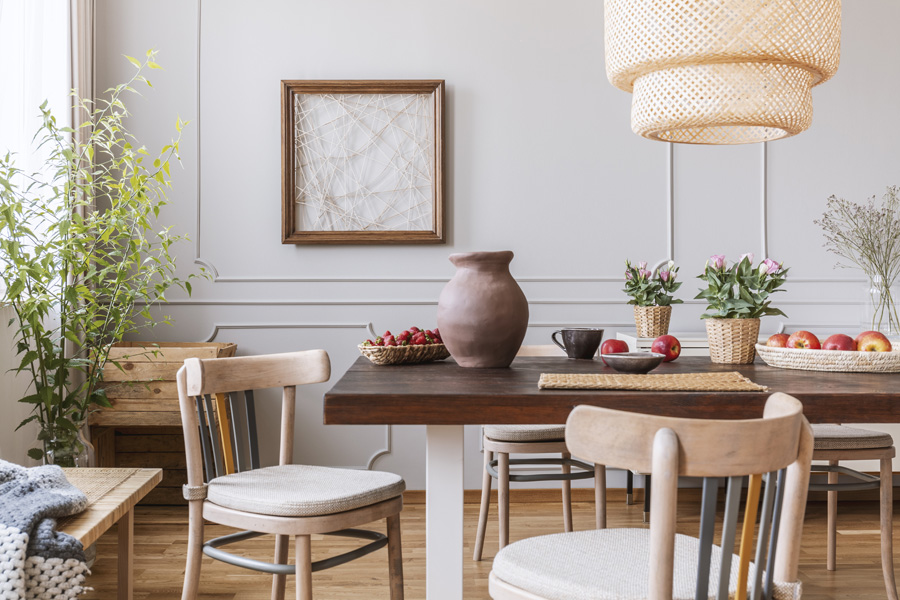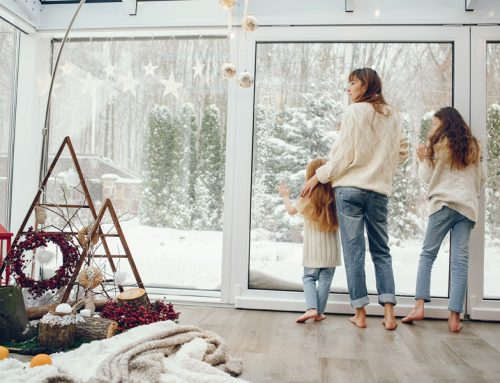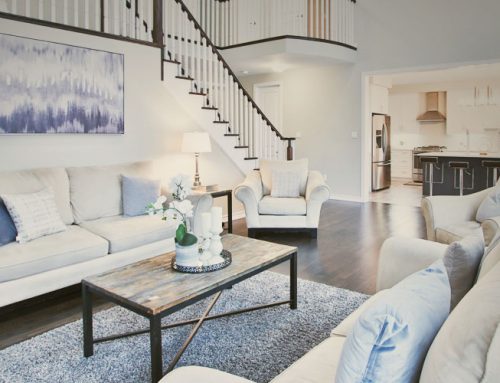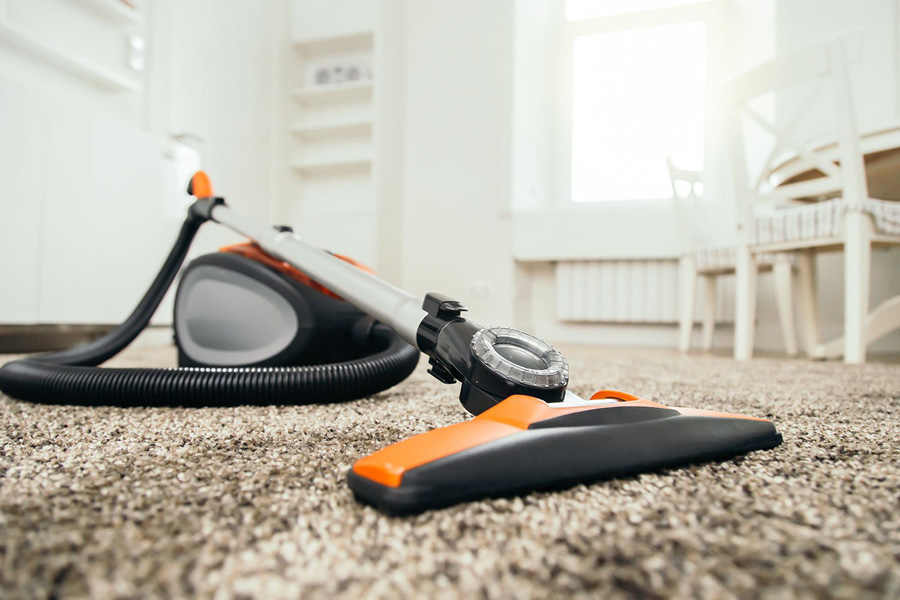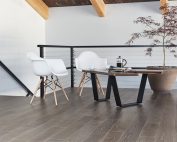Mixing materials to create a comfortable, lived-in look is key to giving your space a designer vibe. To do this, there is no better place to start than with wood. From furniture to flooring, mixing wood tones can make an impact that elevates your room.
Find out how to do this with intention using the steps below.
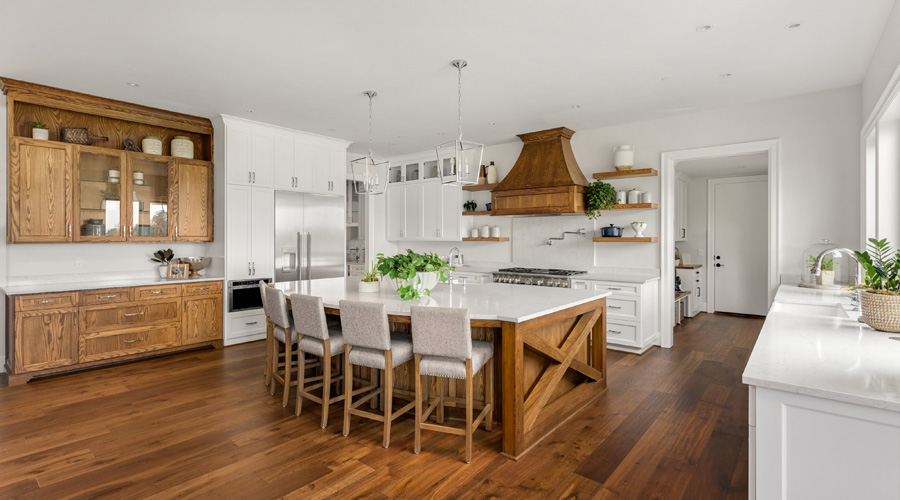
Choose Your Base Tone
If you’re working with existing wood, first find the dominant tone in the room. This tone could be from your wood plank flooring, a large credenza, a table or wall unit, anything large that draws the eye upon entering. What color is it? What is the texture and style? A good rule is to have something dark, medium and light toned in the same space to create interest. Monochromatic looks can make an impact when done right, but a great way to add visual interest to a space is to layer, layer, layer.

Identify Your Undertones
Once the main tone has been identified, look for the undertones. Is your style cool, warm or neutral toned? Does your room have a golden, honey, or blonde look to it? Or is it more stormy, cool and grey? One way to make a room looked pulled together is to keep all your contrasting pieces in the same temperature zone. Pay attention to stain, intensity and richness to keep all the looks in the same family. Your beachy cottage might have a cool whitewashed wood floor, a greige dining table and distressed grey wall accent. Or, for example your dark and moody office has an espresso floor, dark polished desk and warm vintage cherry chairs.
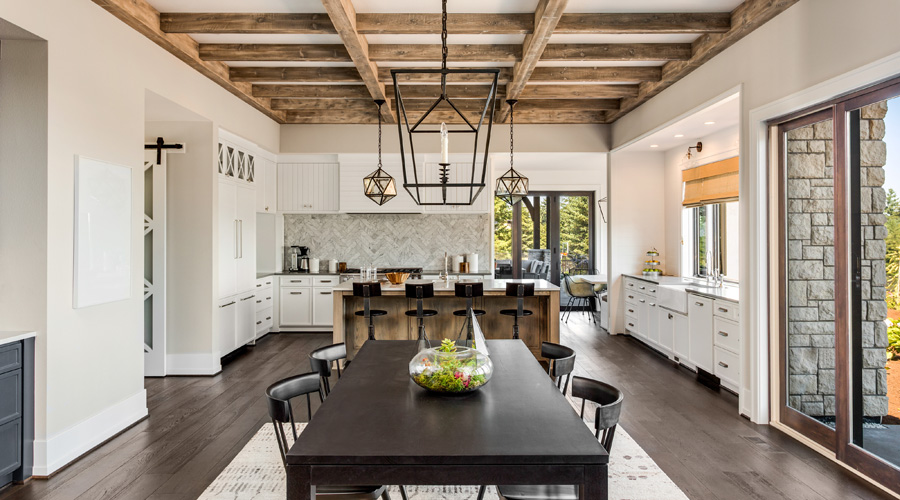
Compare and Contrast
Avoid wood overload by mixing in pieces with color. Don’t be afraid to make a statement with colorful throws, statement art or contrasting rugs and pillows. Metallics in cool or warm tones that match your wood can be a good way to pull together different elements of the room – like lighting and hardware, into the overall theme. You can also use a “bridge” wood like reclaimed lumber or live edge pieces to bring in various tones and colors in a single feature. A mantle, table or counter top can make a statement that pulls the room together.
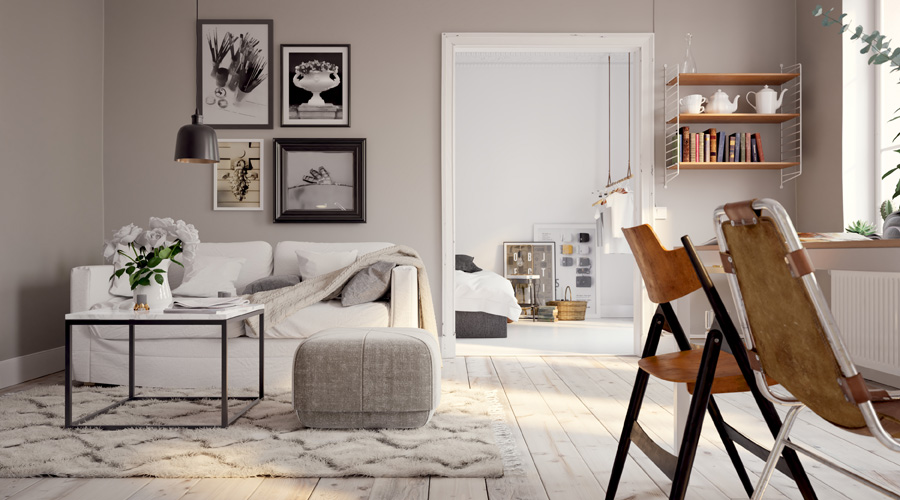
End With The Finish
Finally, to ensure your look comes together seamlessly consider the finish. Even if your wood tones are high contrast, a subtle way to blend them together is with matching textures. For hand scraped wood plank floors, choose a dining table or accent furniture with visible wood grain. For smooth matte floors, look for furniture or wall coverings that echo the eggshell texture. For gloss wood, source chairs, table or counter tops that continue that high impact finish.
Mixing Wood Tones
If you already have beautiful wood floors in your home, it’s easy to use those as your jumping off point. If not, rugs and freestanding furniture can help break up the space and draw the eye away to other focus features. Mixing wood tones can help you balance a space you already love or draw attention away from things you might want to avoid. Either way, it is another great tool to have in your home design arsenal. If you’re looking to upgrade your space and still need some direction, the design experts help.


